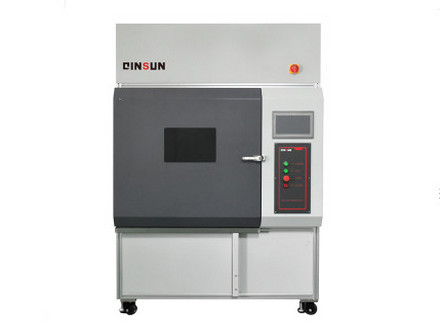
NewsInformation Center
How does a QUv accelerated tester simulate outdoor weathering?
2023/08/04
QUV accelerated tester is a common simulated weather aging test instrument, which is usually used to evaluate the weather resistance and light resistance of materials. It can accelerate the aging process of materials by simulating ultraviolet radiation, high temperature, high humidity and other factors, so as to evaluate the service life and performance of materials. The following will introduce in detail how the QUV accelerated tester simulates outdoor aging.
1. Working principle of QUV accelerated tester
The QUV accelerated tester is an instrument that accelerates the aging of materials by simulating climatic factors. It mainly includes ultraviolet lamps, high temperature blackboards, heaters, condensers, sprayers and other components. During testing, material samples are placed in the test chamber and exposed to UV lamps. Ultraviolet lamps simulate solar radiation, while high-temperature blackboards simulate the ground temperature after the sun shines, and heaters and condensers are used to control the temperature and humidity of the test chamber. The sprayer can spray water mist when needed, simulating rain and humid environment.


2. How does the QUV accelerated tester simulate outdoor aging
The QUV accelerated tester can simulate multiple factors of outdoor aging, including ultraviolet radiation, high temperature, high humidity, water mist, etc. Specifically, the QUV accelerated tester can simulate the environment in the following aspects:
1. Ultraviolet radiation
The UV lamps in the QUV accelerated tester simulate solar radiation, exposing material samples to UV light. This UV radiation simulates long-term exposure to sunlight outdoors to assess a material's lightfastness and color stability.
2. High temperature
The high-temperature blackboard in the test room can simulate the ground temperature after the sun irradiates, exposing the material samples to the high-temperature environment. This high-temperature environment can simulate the long-term exposure of materials to high-temperature environments outdoors to evaluate the heat resistance and stability of materials.
3. High humidity
The condenser and heater in the QUV accelerated tester can control the humidity and temperature of the test chamber, thereby simulating a high humidity environment. This high-humidity environment simulates the long-term exposure of the material to moisture outdoors to evaluate the moisture and corrosion resistance of the material.
4. Water mist
Foggers in the test chamber can spray water mist when needed, simulating rain and humidity. This water mist environment can simulate the long-term exposure of materials to rain and humidity outdoors, so as to evaluate the water resistance and moisture resistance of materials.
3. Advantages and disadvantages of QUV accelerated tester
1. Advantages:
(1) The QUV accelerated tester can accelerate the material aging process, shorten the test time and reduce the test cost.
(2) The QUV accelerated tester can simulate a variety of climate factors, and can more realistically simulate the aging process of materials outdoors.
(3) The QUV accelerated tester can achieve various test requirements by controlling the test conditions, such as different ultraviolet radiation intensities, different temperatures and humidity, etc.
2. Disadvantages:
(1) The QUV accelerated tester cannot completely simulate the actual aging process of materials outdoors, because the complexity and variability of the outdoor environment is difficult to simulate.
(2) The QUV accelerated tester can only simulate the aging process on the surface of the material, but cannot simulate the aging process inside the material.
(3) The test results of the QUV accelerated tester may be affected by many factors, such as the shape, color, material formula and other factors of the sample.
Summary
QUV accelerated tester is a common simulated climate aging test instrument, which can simulate a variety of climate factors, such as ultraviolet radiation, high temperature, high humidity, water mist, etc., to evaluate the weather resistance and light resistance of materials. Although the QUV accelerated tester has some disadvantages, it is still a very useful tool to simulate the aging process of materials outdoors to a certain extent. For industries that need to evaluate the service life and performance of materials in outdoor environments, the QUV accelerated tester is a very important testing method.
Previous: What is the difference between UL 94 and ASTM E84?
N e x t : What are the different types of UV aging test machines available?



